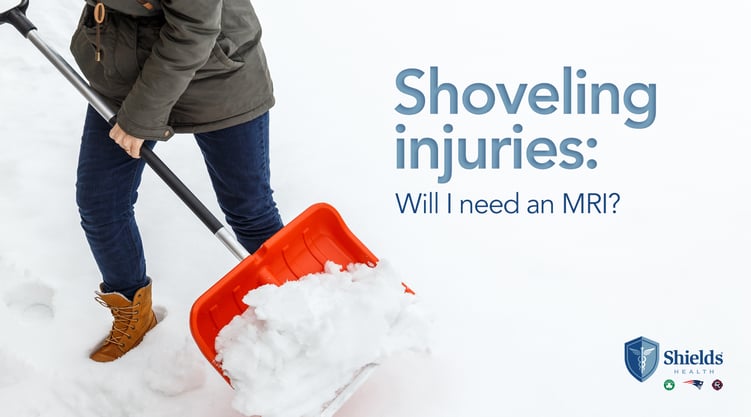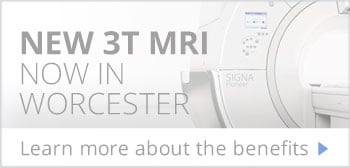
Your plow is stranded. Now it’s just you, your shovel and about four feet of snow. Sound familiar? If you’re living in Massachusetts this winter season it’s likely you’ve spent 2-3 hours over several days clearing cars and driveways – and its wreaking havoc on your back. Snow shoveling is one of the most high-intensity exercises you can do and it’s no surprise that many people end up with a shoveling-related injury that triggers a doctor’s visit. At Shields MRI, one of the top reasons that patients have an MRI is pain in their lower back and specifically for lumbar disc displacement – a condition that can be directly related to an activity that puts a lot of pressure on your back, like shoveling.
Simply bending forward in a routine daily movement can add an immense amount of pressure on the lumbar discs in your spine; add the weight of a shovel filled with snow and a rotation to your core and you’re placing a huge amount of stress and pressure to the lumbar spine. This exertion and pressure can result in lower back strain, a very common injury from shoveling. Lower back strain occurs when a muscle gets over tight and you feel something like a very painful spasm. It could also result in disc displacement. Disc displacement occurs when a disc, which provides cushioning from daily activity while keeping the bones separated, has fallen out of its alignment in the spine. When a disc becomes displaced, it’s no longer functioning in the spine and movements (even slight ones) can become very painful due to the lack of cushioning. This can lead to chronic back pain.
The most common test to diagnose a herniated disc is an MRI and is often the preferred test to do if a herniated disc is suspected (after an x-ray). It is painless and extremely accurate. If your doctor does recommend an MRI for back pain or disc displacement, it is important for you to know that MRI is a diagnostic test that does not have any radiation. It is not used to diagnose your pain, but rather to confirm the presence of a problem (like a herniated disc) that was suspected and use the results of the MRI to determine the best course of treatment. The number one reason patients are seen at a Shields facility is for an MRI of the lumbar spine for disc displacement; our experience in this scan type is vast and our radiologists are the best in the country. Shields MRI is the leading MRI provider in New England with 30 locations across Massachusetts and one in New Hampshire.
If you are faced with the daunting task of shoveling yourself out this winter, it’s extremely important that you pay attention to your injuries. Back pain from shoveling can be very immediate and obvious leading to a trip to the emergency room, but it can also be slow and consistent such as burning in your back or pain radiating down your leg. This can be just as dangerous – particularly if it goes untreated. If you are experiencing back pain of any kind, you may want to contact your doctor or primary care physician.
Sources: Shields MRI business intelligence; http://www.allaboutbackandneckpain.com/understandingconditions/herniateddisc.asp; webmd.com; health.com



